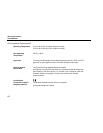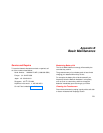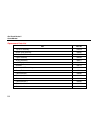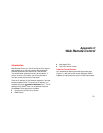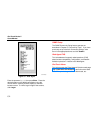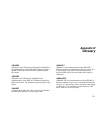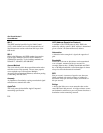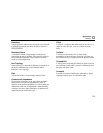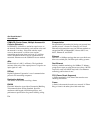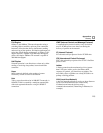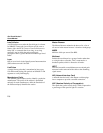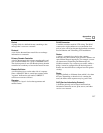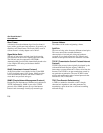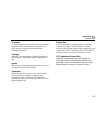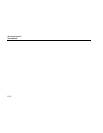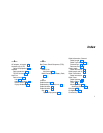
OneTouch Series II
Users Manual
D-4
CSMA/CD (Carrier Sense, Multiple Access with
Collision Detection)
In CSMA/CD, each node or station has equal access to
the network. Before transmitting, each station waits until
the network is not busy. Since each node has equal
access to the network, a collision (two stations
transmitting at the same time) can occur. If a collision
occurs, the affected nodes will wait a random time to
retransmit. Ethernet uses the CSMA/CD access method.
dBm
Decibels below 1 mW (1 milliwatt). The logarithmic
measure of the ratio of the output power of a signal to an
input signal of 1 mW.
DECnet
Digital Equipment Corporation’s set of communication
protocols for networking computers.
Destination Address
The address of the station receiving a frame.
EIA568
Electronic Industries Association Commercial Building
Telecommunications Wiring Standard. Specifies
maximum cable lengths, installation practices, and
performance specifications for generic building wiring.
Encapsulation
Encapsulation is the method of placing one protocol into
another protocol’s format. For example, in a Novell
Ethernet environment there are four different methods to
encapsulate IPX in Ethernet/802.3 frames: 802.3 raw,
802.2, Ethernet II, and SNAP.
Ethernet
Ethernet is a 10 Mbps topology that runs over thick coax,
thin coax, twisted-pair, and fiber-optic cabling systems.
Fast Ethernet
Industry standard terminology for 100Base-T. Industry
groups do not agree on using the term to refer to 100VG-
AnyLAN; some call 100VG-AnyLAN a Fast Ethernet
technology while others do not.
FCS (Frame Check Sequence)
A field transmitted in LAN frames that encodes error
checking information.
Frame
A frame is the transmission unit on a network. In Token
Ring, a frame is the token joined with node data.



